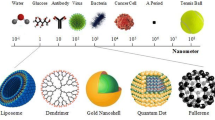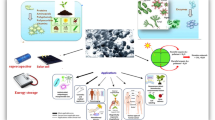Abstract
Radioactive radon decays into a stable daughter product, 210Pb, which was used as the detection target to determine the radon radiation dose in a new technique. Pb2+ triggers DNAzyme to cleave a molecular beacon (MB), resulting in the stem–loop structure opening and forming two single DNA strands (ssDNA). The ssDNA binds to unmodified gold nanoparticles and effectively prevents their aggregation in a salt solution. The detached enzyme strands continue to complement the remaining MB to amplify the response signal. The method proposed in this study exhibited a good linear relationship for Pb2+ and radon concentrations in the range of 6.22 × 102–1.02 × 105 Bq h/m3 with a detection limit of 186.48 Bq h/m3 using an ultraviolet–visible spectrometer. In practical applications, this sensitive method can avoid radioactive damage in field testing, and the detection limit meets the national standard in China. Importantly, this simple, highly sensitive strategy uses simple equipment and has a strong anti-interference ability.

Graphical abstract







Similar content being viewed by others
References
Inácio M, Soares S, Almeida P. Radon concentration assessment in water sources of public drinking of Covilhã’s county, Portugal. J Radiat Res Appl Sci. 2017;1:135–9.
Midhun M, Rejith R, Mathew S, Jojo P, Sahoo B. The in situ measurement and calculation of exhalation rates of radon and Thoron in Alappad region of Kollam district, Kerala, India. Int J Pure Appl Phys. 2017;13:172–8.
Kendall G, Smith T. Doses to organs and tissues from radon and its decay products. J Radiol Prot. 2002;22:389–406.
McColl N Limitation of human exposure to radon: advice from the Health Protection Agency. Health Protection Agency; 2010.
Leuraud K, Schnelzer M, Tomasek L, Hunter N, Timarche M, Grosche B, et al. Radon, smoking and lung cancer risk: results of a joint analysis of three European case-control studies among uranium miners. Radiat Res. 2011;176:375–87.
Lu ZJ, Tu Y, Yu RS. The concentration of radon in special places in China has changed over the last thirty years. Chin J Radiol Health. 2009;18:501–3.
Kreuzer M, Fenske N, Schnelzer M, Walsh L. Lung cancer risk at low radon exposure rates in German uranium miners. Br J Cancer. 2015;113(9):1367.
Meng HM, Lu L, Zhao XH, Chen Z, Zhao Z, Yang C, et al. Multiple functional nanoprobe for contrast-enhanced bimodal cellular imaging and targeted therapy. Anal Chem. 2015;87:4448–54.
Kosman J, Juskowiak B. Peroxidase-mimicking DNAzymes for biosensing applications: a review. Anal Chim Acta. 2011;707:7–17.
Wei H, Li B, Li J, Dong S, Wang E. DNAzyme-based colorimetric sensing of lead (Pb2+) using unmodified gold nanoparticle probes. Nanotechnology. 2008;19:095501.
Li MH, Wang YS, Cao JX, Chen SH, Tang X, Wang XF, et al. Ultrasensitive detection of uranyl by graphene oxide-based background reduction and RCDzyme-based enzyme strand recycling signal amplification. Biosens Bioelectron. 2015;72:294–9.
Wang Y, Yang F, Yang X. Label-free colorimetric biosensing of copper (II) ions with unimolecular self-cleaving deoxyribozymes and unmodified gold nanoparticle probes. Nanotechnology. 2010;21:205502.
Wrzesinski J, Ciesiolka J. Characterization of structure and metal ions specificity of Co2+-binding RNA aptamers. Biochemistry. 2005;44:6257–68.
Hoadley KA, Purtha WE, Wolf AC, Flynn CA, Silverman SK. Zn2+-dependent deoxyribozymes that form natural and unnatural RNA linkages. Biochemistry. 2005;44:9217–31.
Chang J, Zhou G, Christensen ER, Heideman R, Chen J. Graphene-based sensors for detection of heavy metals in water: a review. Anal Bioanal Chem. 2014;406:3957–75.
Saran R, Chen Q, Liu J. Searching for a DNAzyme version of the leadzyme. J Mol Evol. 2015;81:235–44.
Brown AK, Li J, Pavot CM-B, Lu Y. A lead-dependent DNAzyme with a two-step mechanism. Biochemistry. 2003;42:7152–61.
Zhao XH, Kong RM, Zhang XB, Meng HM, Liu WN, Tan W, et al. Graphene–DNAzyme based biosensor for amplified fluorescence “turn-on” detection of Pb2+ with a high selectivity. Anal Chem. 2011;83:5062–6.
Huang PJ, Liu J. Two Pb2+-specific dnazymes with opposite trends in split-site-dependent activity. Chem Commun. 2014;50:4442–4.
Wang HB, Wang L, Huang KJ, et al. A highly sensitive and selective biosensing strategy for the detection of Pb2+ions based on GR-5 DNAzymefunctionalized AuNPs. New J Chem. 2013;37:2557–63.
Lan T, Furuya K, Lu Y. A highly selective lead sensor based on a classic lead DNAzyme. Chem Commun. 2010;46:3896–8.
De Vasconcelos CL, Pereira MR, Fonseca JLC. Polyelectrolytes in solution and the stabilization of colloids. J Dispers Sci Technol. 2005;26:59–70.
Zhao W, Brook M, Li Y. Design of gold nanoparticle-based colorimetric biosensing assays. Chembiochem. 2008;9:2363–71.
Li H, Rothberg L. Detection of specific sequences in RNA using differential adsorption of single-stranded oligonucleotides on gold nanoparticles. Anal Chem. 2005;77:6229–33.
Zhou M, Lin T, Gan X. Colorimetric aggregation assay for silver(I) based on the use of aptamer modified gold nanoparticles. Microchim Acta. 2017;184:4671–7.
Willets KA, Duyne RPV. Localized surface plasmon resonance spectroscopy and sensing. Annu Rev Phys Chem. 2007;58:267–97.
Grabar KC, Freeman RG, Hommer MB, Natan MJ. Preparation and characterization of Au colloid monolayers. Anal Chem. 1995;67:735–43.
Mie G. Beiträge zur Optik trüber Medien, speziell kolloidaler Metallösungen. Ann Der Physik. 1908;330:377–445.
Kreibig U, Vollmer M. Optical Properties of Metal Clusters. Springer-Verlag; 1995.
Link S, El-Sayed MA. Spectral properties and relaxation dynamics of surface plasmon electronic oscillations in gold and silver nanodots and nanorods. J Phys Chem B. 2000;103:8410–26.
Yan YQ, Tang X, Wang YS, Li MH, Cao JX, Chen SH, et al. A sensitive and selective fluorescence assay for metallothioneins by exploiting the surface energy transfer between rhodamine 6G and gold nanoparticles. Microchim Acta. 2015;182:1353–60.
Liu J, Lu Y, Liu J, Lu YA. Colorimetric lead biosensor using DNAzyme-directed assembly of gold nanoparticles. J Am Chem Soc. 2003;125:6642–3.
Wang Z, Lee JH, Label-Free Colorimetric LY. Detection of lead ions with a Nanomolar detection limit and tunable dynamic range by using gold nanoparticles and DNAzyme. Adv Mater. 2010;20:3263–7.
Yun W, Cai D, Jiang J, Zhao P, Huang Y, Sang G. Enzyme-free and label-free ultra-sensitive colorimetric detection of Pb2+ using molecular beacon and DNAzyme based amplification strategy. Biosens Bioelectron. 2016;80:187–93.
Kim JH, Han SH, Chung BH. Improving Pb2+ detection using DNAzyme-based fluorescence sensors by pairing fluorescence donors with gold nanoparticles. Biosens Bioelectron. 2011;26:2125–9.
GB/T 16146—2015, Requirements for control of indoor radon and its progeny. National Standards of the People’s Republic of China.
GB/T 14582—1993, Standard methods for radon measurement in environmental air. National Standards of the People’s Republic of China.
Funding
The authors received support from the National Natural Science Foundation of China (No. 81473021) and Graduate Student Research Innovation Project in Hunan Province (No. CX2017B557).
Author information
Authors and Affiliations
Corresponding author
Ethics declarations
Conflict of interest
The authors declare that they have no competing interests.
Electronic supplementary material
ESM 1
(PDF 226 kb)
Rights and permissions
About this article
Cite this article
Liu, H., Chen, Y., Song, C. et al. Novel and label-free colorimetric detection of radon using AuNPs and lead(II)-induced GR5 DNAzyme-based amplification strategy. Anal Bioanal Chem 410, 4227–4234 (2018). https://doi.org/10.1007/s00216-018-1077-8
Received:
Revised:
Accepted:
Published:
Issue Date:
DOI: https://doi.org/10.1007/s00216-018-1077-8




